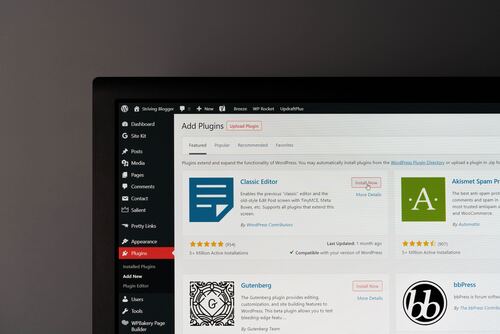Software applications have become an essential requirement for everyone nowadays. Gone are the days when they were limited to the specialized industry. They now dominate every sector, whether it’s technical or non-technical. Interestingly, the users of these software applications are often not tech-savvy. Therefore, it is crucial to ensure that the software application meets their needs and provides a seamless user experience. This can be effectively achieved through automated testing tools like Playwright. Playwright testing is a method of automating browser tests, which is highly beneficial.
Playwright is a highly sought-after framework used for automation testing. Its popularity stems from its focus on the end-users of software applications. These end-users are the ones who determine whether a software application will gain a good reputation or not. With Playwright, automated cross-browser testing becomes a breeze, ensuring the program works seamlessly across all browsers with minimal time and effort. Additionally, Playwright allows for end-to-end testing, which satisfies the end-users with its solid performance and execution of software applications.
In this article, we will delve into Playwright testing and explore the various methods for conducting Writer testing. Additionally, we will focus on the step-by-step process of performing Playwright testing and highlight the best practices that can be implemented to enhance the development of a flawless software application. These valuable insights will enable us to deliver a top-notch software application worldwide.
What is a Playwright?
Playwright, a testing tool developed by Microsoft, offers automated testing capabilities to its users free of charge. The Playwright system is built using JavaScript, also known as the Node.js Library among testers and developers. What sets Playwright apart is its ability to test software applications across multiple browsers using a single API, eliminating the need for separate environments for each browser. This makes it ideal for conducting comprehensive end-to-end testing and ensuring the delivery of stable software applications that provide exceptional user experiences.
Automated testing is a more efficient alternative to manual testing, as it speeds up the testing process for software applications. To implement automated testing, a framework like Playwright is commonly used. Additionally, Playwright seamlessly integrates with cloud-based platforms like LambdaTest for enhanced functionality and flexibility.
It is a powerful cloud testing platform that aims to optimize and improve the automation testing process for developers and testers. What sets it apart is its ability to automate intricate and unpredictable scenarios, offering a dependable solution for diverse testing needs.
What makes LambdaTest stand out in the field of automation testing is its AI-driven test execution and orchestration capabilities. By utilizing LambdaTest, users can access real device cloud, a vast grid of more than 3000 real browsers and operating system combinations. This diverse testing environment ensures thorough coverage, guaranteeing that applications are extensively tested across various configurations.
But LambdaTest doesn’t stop at the conventional. It goes beyond that by offering advanced features and a user-friendly interface, making it an invaluable tool for tackling intricate testing scenarios. Teams can seamlessly automate tests, ensuring efficient and effective testing across browsers and operating systems. In summary, LambdaTest is a versatile ally that empowers users to optimize their automation testing processes.
Writing Effective Playwright Test Cases
To begin with Playwright testing, you must download and install all the prerequisites. Then, follow the steps below to conduct Playwright testing on your software applications.
- Install and Setup:
Testing of software applications starts with introducing the Playwright framework. The Playwright must be introduced to the root directory of the project. You will utilize the command ‘npm install playwright’ in your terminal for framework establishment. After introducing the framework, you must set up your software application’s functionality. It incorporates the organization of the test scripts into a specific folder. This makes a difference in organizing and keeping up the project. By default, Playwright underpins Chromium for browser testing. Hence, you would like to arrange other browsers through test script alteration.
- Scripting Your Test:
Composing the test script is basic to software application testing. The test scripts should be organized into a directory for successful organization and support. Its title should characterize the objective of the test case. The test script should be organized with browsers. It must incorporate all the edge scenarios for testing the end user’s usefulness. The Playwright command can be utilized to collaborate with each component of the software applications. The Playwright permits the include assertions in the test scripts. It makes a difference in the approval of software application features.
- Advanced Interaction:
The Playwright has picked up popularity due to its progressive features. It lets you navigate the software application, which lets us test numerous features simultaneously. The logs also help register the navigation, updates, and changes made within the test scripts. These further help in the maintenance of test scripts. Utilizing Playwright, you’ll be able to connect with frames and iframes effectively. Indeed, you’ll be able to handle the nested iframe easily. Playwright allows you to oversee the cookies and play with the client Interface components.
- Data-Driven Testing:
Playwright permits its clients to carry out data-driven testing on the software application. For data-driven testing, you must script your test cases with parameters that can be initialized with numerous inputs. This lets you test a single test case with numerous inputs. Utilize external sources for information capacity. It’ll let you employ a single information set with numerous test scripts. You may also utilize a cloud-based platform to get the information. The Playwright facilitates information administration through the utilization of fixtures and the generation of dynamic test information.
- Test Setup and Organization:
Test setup and organization are imperative for playwright testing. Hence, you will organize your test scripts through fixtures. Moreover, the utilization of dynamic fixture test information makes the testing of software applications effective. The global setup of test scripts can be effortlessly done by utilizing test hooks. At that point, you must also organize your test cases according to their common features. It makes administration simple.
- Parallel Test Execution:
The Playwright can execute numerous test cases simultaneously. This makes a difference in speeding up overall development. For parallel execution, firstly, you are required to design your environment. Then, execute the test cases at the same time. Moreover, you would like to guarantee each test case is scripted independently to anticipate interference. Moreover, parallel execution permits resource sharing, which spares the additional utilization of resources.
- Test Reporting and Analysis:
You must create test reports for the executed test cases. The reports must be point by point with the passed or failed status of the test case. You’ll utilize an automated tool for the report creation. The test scripts must be integrated into CI/CD pipelines for a better investigation. This empowers Playwright to test software applications after each update. During analysis, you must also track the execution of the software applications.
Common Mistakes Encountered During Playwright Testing
A small mistake usually leads to great disasters. Therefore, here is a list of mistakes that can be encountered during Playwright testing.
- Playwright configuration can be challenging. A wrong configuration leads to unexpected results and failure of test cases.
- A software application has various elements with similar features. Therefore, one must avoid writing different scripts for every element to keep the test scripts short.
- One must avoid testing third-party applications using Playwright. This is because third-party applications tend to update themselves without any information. It may further present unexpected results.
- Not using an appropriate selector during Playwright testing is the most common mistake testers and developers make.
- Avoiding Playwright’s built-in debugging capabilities and tools is another mistake that should be taken care of.
Best Practices For Playwright Testing
Here is a list of best practices you must follow during Playwright testing for a seamless software application.
- Automated testing should verify that application code works for end users and avoid relying on implementation details such as those that users would not normally use.
- Each test should be completely isolated from others and run independently with local storage, session storage, data, cookies, etc.
- Only test what you can control. Do not test links to external websites or third-party servers you do not control.
- When working with databases, be sure to control your data. Test it in a staging environment and make sure there are no changes.
Conclusion
Testing software applications on any single device or browser isn’t sufficient to guarantee quality and rightness and give seamless user involvement. Thus, the Playwright test is carried forward on the cloud. The cloud-based platform permits analyzers and designers to execute complex test cases with no exertion and in very little time.
The playwright may be a great choice when talking around a cloud-based stage because it permits testers and engineers to center on scripting compelling test suits that will guarantee a consistent program application. The article best depicts how Playwright testing upgrades the effectiveness and execution of the software application. It guides you in performing the Playwright testing. The steps above direct you through the right pathway, driving you to a consistent software application.




